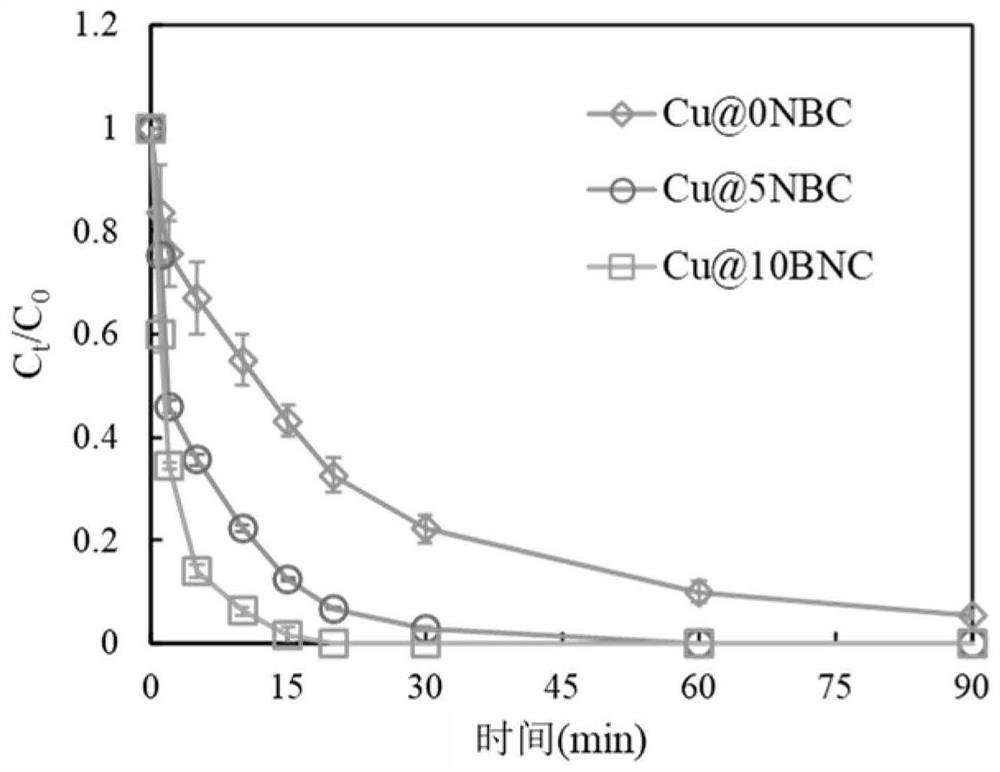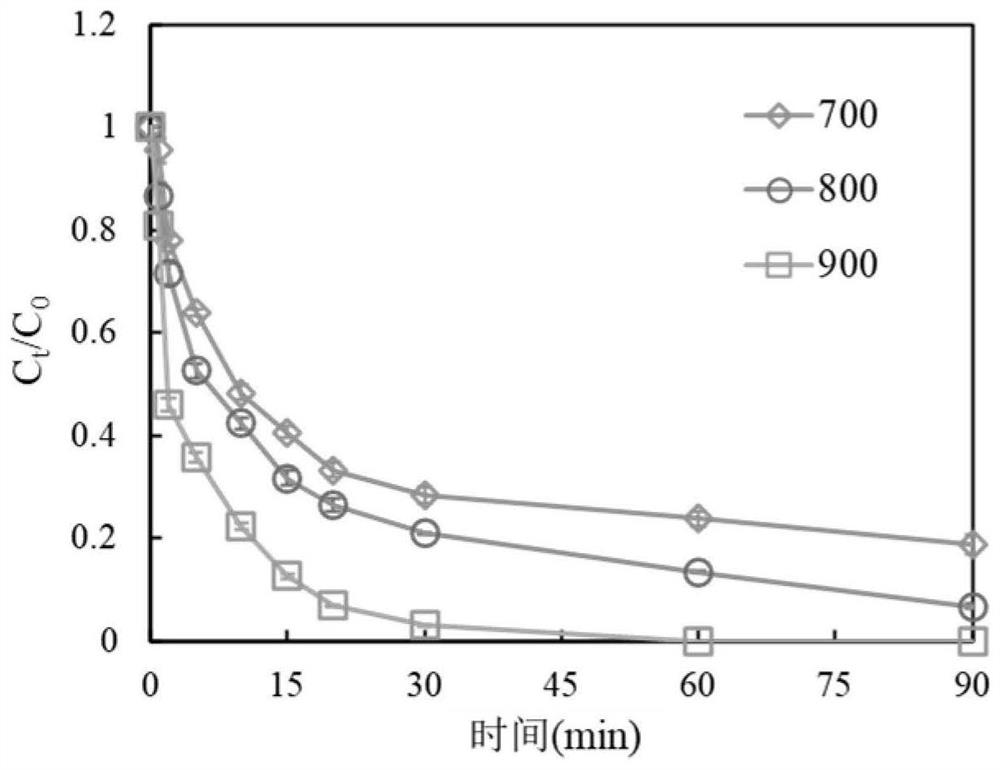Application of Catalyst Using Waste Adsorbent After Adsorption-Desorption as Raw Materials in Activated Persulfate Treatment of High Salt Organic Wastewater
An organic wastewater and adsorbent technology, which is applied in the fields of oxidized water/sewage treatment, physical/chemical process catalyst, water/sewage treatment, etc. The effect of relieving the pressure of solid waste disposal, high removal rate of organic matter, and avoiding secondary pollution
- Summary
- Abstract
- Description
- Claims
- Application Information
AI Technical Summary
Problems solved by technology
Method used
Image
Examples
Embodiment 1
[0050] The catalyst using the waste adsorbent after adsorption-desorption as raw material is applied in the treatment of high-salt organic wastewater by activating persulfate, including the following steps:
[0051] (1) Dry the waste biomass adsorbent after 8 times of adsorption-desorption of Cu ions, take 10 g of the dried waste adsorbent, mix it according to the mass ratio of waste adsorbent: dicyandiamide 1:5, and put it into a porcelain boat Compact it, put it into a tube furnace, heat it up to 900°C at a rate of 10°C / min under a nitrogen atmosphere for pyrolysis, keep it warm for 2 hours and then bring it to room temperature, take it out and wash it with deionized water, and finally put it at 60°C drying to obtain the spent adsorbent-based catalyst;
[0052] (2) Add the waste adsorbent-based catalyst into the high-salt organic wastewater, and add persulfate at the same time. The dosage of persulfate is 0.2 g / L. React for 90 minutes to degrade and remove persistent organi...
Embodiment 2
[0054] The catalyst with the discarded adsorbent after adsorption-desorption as raw material described in Example 1 is used in activated persulfate treatment of high-salt organic wastewater, the difference being that the mass ratio of the discarded adsorbent to dicyandiamide is 1 :0.
Embodiment 3
[0056] The catalyst with the discarded adsorbent after adsorption-desorption as raw material described in Example 1 is used in activated persulfate treatment of high-salt organic wastewater, the difference being that the mass ratio of the discarded adsorbent to dicyandiamide is 1 :10.
PUM
| Property | Measurement | Unit |
|---|---|---|
| particle diameter | aaaaa | aaaaa |
| particle diameter | aaaaa | aaaaa |
| thermal decomposition temperature | aaaaa | aaaaa |
Abstract
Description
Claims
Application Information
 Login to View More
Login to View More - R&D
- Intellectual Property
- Life Sciences
- Materials
- Tech Scout
- Unparalleled Data Quality
- Higher Quality Content
- 60% Fewer Hallucinations
Browse by: Latest US Patents, China's latest patents, Technical Efficacy Thesaurus, Application Domain, Technology Topic, Popular Technical Reports.
© 2025 PatSnap. All rights reserved.Legal|Privacy policy|Modern Slavery Act Transparency Statement|Sitemap|About US| Contact US: help@patsnap.com



